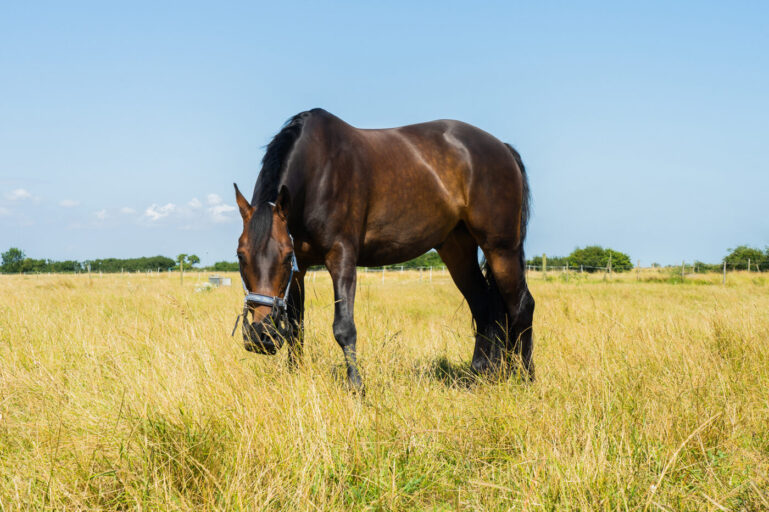Stats from laminitis risk calculator show an increase in number of horses at risk!
Whilst many of horse owners are aware of some of the risk factors, we don’t always appreciate everything that can increase the risk of our horses getting laminitis. Last year, we devised a handy web-tool designed to raise awareness of some of the lesser-known risk factors of laminitis and to draw people’s attention to the cumulative effect of a number of different risks. Statistics recorded from the horse owners using the laminitis risk calculator show an increase in percentage of horses at a moderate risk.

As many owners of good doers are feeding very little in the bucket, forage and pasture nearly always pose the greater issue rather than the bucket feed. The area which scores highest in the risk calculator is not having forage tested and therefore not knowing the non-structural carbohydrate levels. There are often practical reasons why testing forage isn’t feasible, but if you have a consistent supply, it is well worth knowing what your horse is consuming. Bucket feed always scores lowest as the majority of people select the option ‘I use a balancer or supplement with a low-calorie high fibre feed’.
Research has found that being overweight significantly increases the horse’s risk of laminitis, it is therefore vital to take action early if your horse does become overweight. Maintaining your horse at a healthy weight can be a real challenge and studies report that between 30 and 50% of the equine population is overweight or obese (Furtado et al, 2020). Feedback from vets and nutritionists suggests this figure could be considerably higher in leisure horses specifically.

The following actions are the most important things you can do to reduce the risk of laminitis in horses:
- Restrict access to grazing – stabling your horse means you can get complete control over what they eat – this is often the most effective way to achieve weight loss as grass is usually the greatest source of energy and sugar in most horses’ diets. If this is not possible then grass intake should be restricted by methods such as strip grazing or wearing a grazing muzzle.
- Feed sufficient low calorie forage – aim for 1.5% of bodyweight on a dry matter basis per day to maintain digestive health and satisfy your horse’s need to chew.
- Use low-calorie fibre feeds – Dengie Hi-Fi Lite, Hi-Fi Molasses Free or Ulser Lite can be used to replace forage and are really useful if you only have access to high quality forages. They are the ideal feed to mix a supplement or balancer into to slow rate of intake.
- Ensure they have a balanced diet – restricted access to grass not only reduces energy (calorie) intake but also essential vitamins and minerals. A feed balancer or broad spectrum vitamin and mineral supplement should be fed to provide a balanced diet.
- Monitor body fat – you can use a condition score chart to spot when your horse is changing the amount of fat they are storing. Regularly using a weigh tape or weighbridge can also help monitor if your horse is gaining or losing weight.
It’s often a “perfect storm” of events that combine to result in the horse coming down with laminitis and by completing our quick questionnaire, we hope it will help to make horse owners stop and think about what they can change in the management of their horse.
If you would like further information on the latest advice about laminitis, or personalised help and advice call the Dengie Feedline on 01621 841188 or fill out a feed advice form.



